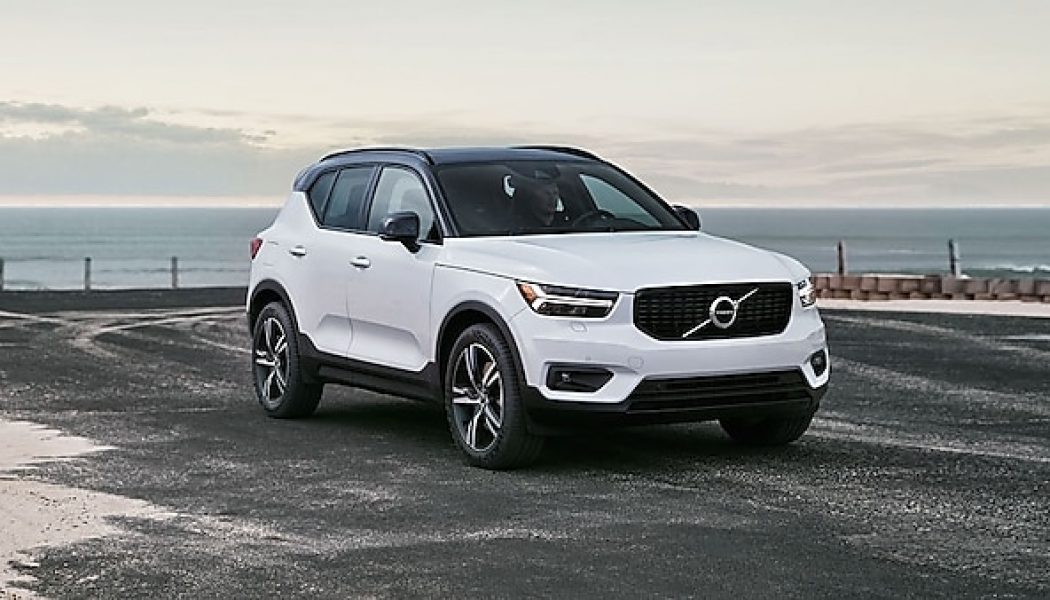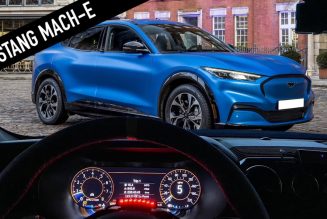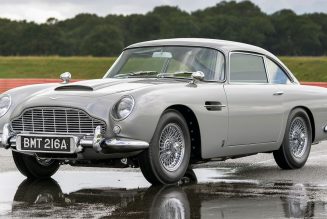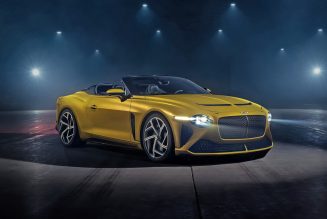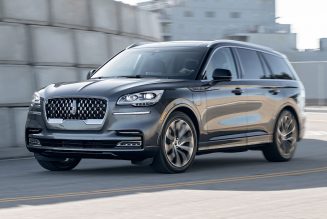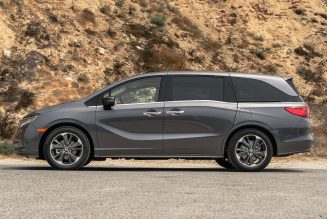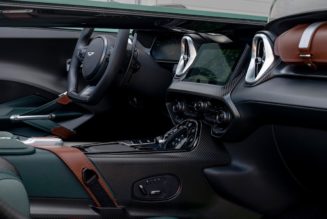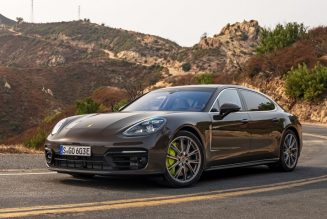Quick quiz: How many 400-plus-hp production cars has Volvo built? The 402-hp 2021 Volvo XC40 Recharge Pure Electric P8 is one of the most significant cars the Swedish brand has launched, right up there with the P144 Amazon, the 760, and the S80. But that significance derives not from being one of the most powerful Volvos ever produced (along with the Polestar-tweaked XC90 T8 PHEV), but rather what produces that power. The XC40 Recharge Pure Electric P8 is Volvo’s first electric car.
The headlines: The XC40 Recharge P8 is powered by a pair of 201-hp electric motors, one mounted at the front axle, the other at the rear, giving a total system output of 402 horsepower and 486 lb-ft of torque and, of course, all-wheel drive. The motors are fed by a 78-kWh lithium-ion battery pack that Volvo expects will deliver an EPA-rated range of about 208 miles, and the battery can be recharged to 80 percent capacity in 40 minutes using a 150-kW DC fast charger. With federal tax credits included, the XC40 Recharge P8 will have a base price of less than $50,000, and first U.S. customer deliveries are expected in early 2021.
The XC40 Recharge P8 is built on the CMA vehicle architecture that underpins the regular internal combustion engine powered XC40, modified to package the Recharge P8’s e-motors and associated hardware and, of course, the battery pack. That makes the Recharge P8 heavier than a car built on a bespoke battery electric (BEV) platform. It weighs 4,823 pounds, 456 pounds more than a Tesla Model Y Long Range, for example. But using the CMA architecture shortened the development time—Volvo says the decision to build the XC40 Recharge P8 was only taken in early 2017—and also meant the car could be built in existing factories in Europe and Asia.
The Recharge P8 partly fixes that complaint. Volvo claims the all-electric XC40 will zip from 0-60 in just 4.7 seconds, 1.6 seconds less than it takes the 248-hp, conventionally powered AWD R-Design T5 model. And it feels every bit as quick as that on the road, whooshing past slower traffic in one effortless, silent surge of acceleration, and leaping out of tight corners on a tidal wave of torque and AWD traction.
With its taut ride, the XC40 Recharge P8 feels a bit like a hot hatch on stilts, particularly on the 235/45 Pirelli PZero Elect tires wrapped around the optional 20-inch wheels fitted to our test car. But only to a point: There’s not a lot of feel in the steering, which is best in the firmer of the two selectable modes to counter the tendency of the tires to follow contours in the road surface, and the brake pedal gets a little wooden after a stint of enthusiastic driving.
The Recharge P8 driveline has only two modes: Normal, in which the car coasts when you lift off, and One Pedal, which does exactly as it says, using regen to slow the car dramatically the instant you release pressure on the accelerator pedal. One Pedal mode is sometimes useful around town, but Normal mode gives the electric XC40 a nicer, more free-flowing demeanor that makes it less tiring to drive (you don’t have to constantly keep pressure on the accelerator just to keep the car moving) and more efficient (converting kinetic energy into energy stored in the battery invariably means some energy is lost). In Normal mode, all braking up to 0.3g is done via regen anyway, and though a little more initial bite would be nice, the blending between regen and mechanical braking is smoothly done.
Although the XC40 Recharge P8 looks almost identical to the rest of the XC40 family, it has a number of unique features. The most obvious is the covered grille, but the design of the standard 19-inch and optional 20-inch alloy wheels, and the Sage Green exterior color of our test car, are exclusive to the Recharge P8. Inside, it’s all pretty familiar XC40 fare, but you’ll search long and hard for a start-stop button. There isn’t one; once the Recharge P8 is unlocked, you simply sit in the seat, buckle up, tug at the stubby shifter, and drive off. There’s a sensor in the driver’s seat squab that gets the car ready to go.
Despite the battery pack under the floor, the Recharge P8 cabin feels as roomy as that of the regular XC40, and Volvo claims the rear load space area is identical. With no bulky combustion engine up front, there’s also a small frunk, roomy enough for a soft bag and some charging cables under the hood. Standard equipment levels are high and include a 12.3-inch digital instrument panel with configurable EV-specific displays, panoramic sunroof, heated front power seats, and inductive charging for your smartphone. Also standard is the full suite of Volvo safety features, including lane keep assist, blind-spot and cross-traffic alert, and rear collision alert.
The XC40 Recharge P8 also has Volvo’s new Google Android-powered infotainment system, which comes with Google Maps, Google Assistant, and Google Play apps, among others, all controlled via the 9.0-inch central touchscreen. The system can handle over-the-air updates, allowing upgrades for everything from apps to vehicle software to be downloaded while the car is parked.
The 2021 Volvo XC40 Recharge Pure Electric P8 is smooth, quiet, fast, and as well-built and well-finished as you expect a Volvo to be. But is that enough? On paper Tesla’s Model Y Long Range Dual Motor looks right in the XC40’s wheelhouse. It’s similarly priced yet offers a longer range—316 miles versus just north of 200 miles—and more luggage capacity. But the narrower and lower Tesla is more than a foot longer overall than the nuggety Volvo and doesn’t look as premium, especially inside.
CEO Håkan Samuelsson admits Volvo, which has long positioned itself as one of the more environmentally aware automakers, has taken its time getting an electric vehicle into production. But he says the XC40 Recharge P8 is just the first of five battery electric Volvo models to be launched over the next five years. He claims that by 2025 half the company’s entire production—as many as 500,000 vehicles a year—will have pure electric powertrains.
Think of the XC40 Recharge P8 as a first step. And unless you need to do more than 200 miles a day, it’s a confident and considered one.
